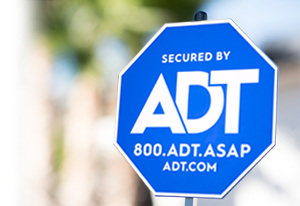
What Are the Key Elements of a Residential Security System?
If you’re seeking a residential security system to keep your home and family safe, you may wonder what these solutions entail. Some features of home security systems are optional, while others are must-haves. Before you settle on an option, take a look at the list of the key elements below to inform your decision.
The Key Elements of a Residential Security System

Access Control
Keypads are the most common access control options. They require you to enter a code upon arriving home when your alarm is activated. They can also be set up to monitor additional entryway contacts, such as windows and back doors. When you input the proper sequence, the alarm deactivates. However, if there is a break-in and the proper code isn’t entered, the monitoring team will alert you, as well as local authorities if needed. You can also program your keypad with a panic button that will automatically send for help when pushed.
Alarms
When an entryway contact detects a potential break-in and the alarm isn’t disabled by you, a high-decibel alarm will sound. This alerts anyone in the vicinity of an issue, but also deters the trespasser from going any further. In fact, the Electronic Security Association (ESA) reports burglars typically abandon attacks when they encounter an alarm.
Cameras
Security cameras are optional residential security features, but many homeowners integrate them into their systems for added peace of mind. With today’s cutting-edge technology, you can even view what’s happening outside your home in real-time from any mobile device. This gives you the utmost level of control over your home’s safety at all times.
Motion Detector
Interior motion detectors alert you of unwanted intruders inside your home. They are sensitive enough to detect movement in designated areas yet also have the intelligence to prevent false alarms caused by pets. You can align these solutions with your monitoring services so the proper parties are notified if anyone gains entry to your home.
Signage
A sign displaying your home’s security system may not seem that important. However, consider this: the ESA reports 90% of burglars avoid homes that have alarm systems. Homes that prominently display their home security systems are therefore much less likely to be vandalized. With that said, criminals are now adept at spotting fake signs, so always play it safe by investing in a real residential security system.
Additional Protection
In addition to the features listed above, security systems can also encompass protection against disasters like fires. With advanced technology, systems use sensors to detect threats like carbon monoxide and fires. They can even tell when your home’s temperature drops too low if you’re away for an extended period of time. This full line of protection keeps your home and family safe against the broadest range of safety risks possible.
24/7 Monitoring
Lastly, but perhaps most importantly, every residential security system must include 24/7 monitoring. A designated monitoring center is on call round-the-clock and will be alerted at the first sign of an issue. They will get in touch with you within seconds if your alarm goes off. If there is no response or you need assistance, they will dispatch authorities and help will arrive. This prompt reaction time is one of the best qualities home security systems provide and in some cases is even a life-saving feature.
When homeowners in New York, New Jersey, and Pennsylvania need top-of-the-line residential security, they enlist the help of ADT Authorized Dealer All County Security. Their team couples local service with industry-leading ADT solutions for the area’s best home security options. Find out how they can keep your home safe and secure by filling out a brief form online, or call (844) 252-7611 to speak with one of their experts.


